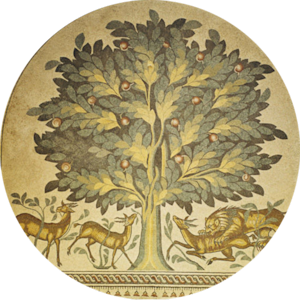Species Recovery, Arabian Oryx
1972 CE • Oman, Saudi Arabia, Israel, United Arab Emirates, and Jordan
The Arabian Oryx, a species of antelope locally known as Al Maha once ranged most of the plains and deserts of the Arabian Peninsula. “Oryx have been sought since ancient times by local hunters for their meat, hide and the supposed medicinal properties of the blood. However, the destructive potential of hunting intensified with the introduction of modern weapons and motor vehicles. The wide availability of 4WD vehicles after 1945 enabled hunting parties to reach all remote and previously inaccessible areas of the peninsula and sealed the oryx's fate.” The three last wild Oryx were probably shot in 1972 in southern Oman. The Phoenix Zoo started a captive breeding program in the early 1960s and over 200 young Oryx were successfully bred. Today, its wild population stands at over a thousand individuals. However, continued poaching, habitat loss, and climate change continue to threaten the Oryx.
“Arabian Oryx Regional Conservation Strategy and Action Plan,” Environment Agency Abu Dhabi (EAD), The Coordination Committee for the Conservation of the Arabian Oryx (CCCAO), IUCN/SSC Antelope Specialist Group (ASG), 2010
Charlesjsharp. Arabian Oryx (oryx Leucoryx) in the Dubai Desert Conservation Area, UAE. 15 Feb. 2014. <https://commons.wikimedia.org/wiki/File:Arabian_oryx_(oryx_leucoryx).jpg>.


Learn about Maya Lin’s fifth and final memorial: a multi-platform science based artwork that presents an ecological history of our world - past, present, and future.

Discover ecological histories and stories of former abundance, loss, and recovery on the map of memory.

Learn how we can reduce our emissions and protect and restore species and habitats – around the world.

See how art can help us rethink the problems we face, and give us hope that each one of us can make a difference.

Help make a global memorial something personal and close to home. Share your stories of the natural world.
